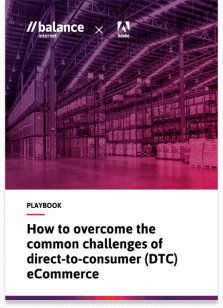Why ‘commerce everywhere’ is the next frontier of retail
Latest news / 26 September 2022


Explore why the next frontier of online retail lies beyond traditional websites.
But what is it that they need to do to achieve this? The answer is almost always connection. The digital acceleration experienced during the COVID-19 pandemic resulted in an unprecedented shift to online shopping. According to new Australia Post data, online shopping in Australia hit a record $62.3 billion in sales in 2021. However, the ubiquitous uptake of eCommerce is only just the beginning. As new technologies emerge and continue to disrupt the retail landscape, we’re starting to see the rise of digital transactions outside of traditional websites. Soon, the concept of online vs. in-store commerce will be simply replaced with ‘commerce everywhere’ – the ability for transactions to take place within just about any digital platform.
As with all retail technologies, enabling commerce everywhere approach helps to remove barriers to purchase. Whether it’s because customers are unable to navigate a website, they can’t find what they’re looking for, or because they simply can’t remember a specific URL, having multiple channels available where customers can access and purchase goods and services – including messaging platforms, social media sites, SMS and even via voice assistant – means retailers are transforming the shopping experience, allowing customers to engage with them, wherever and however they feel most comfortable. Commerce everywhere shifts the shopping experience to fit in and around consumers’ lives, not the other way around.
The rise of conversational commerce
In the same way a customer might get overwhelmed walking into a giant department store, some shoppers can get overwhelmed trying to navigate their way around an online store. If they can’t find what they’re looking for, if the landing page isn’t personalised, or if there’s too much content competing for attention, it’s going to result in a high bounce rate.
While it was once standard practice for automated chatbots to help customers find what they’re looking for, it’s becoming increasingly apparent that chatbots don’t meet customer expectations when it comes to complex enquiries. Although they may come in handy for the most basic queries, savvy retailers are instead opting to integrate messaging services such as WhatsApp, Messenger and even SMS into their websites, allowing customers to speak with a live customer service representative, then move to a format they’re most comfortable using.
From there, integrated commerce solutions allow brands to make sales from directly within these messaging platforms, as well as their social media channels, without ever having to send that customer back to the website. When done correctly, conversational commerce allows a customer to start a chat on the website, continue on Facebook Messenger, and then complete their purchase – possibly days or weeks later – via WhatsApp. By mimicking the way consumers chat with their friends and family, it’s a more organic and natural experience than visiting a website. It allows customers to connect when it suits them, while for brands it means maintaining customer engagement and having the ability to complete transactions well after a customer has left their online store.
Hey Google, buy me a new shirt
As early as 2019, US retail giant Walmart partnered with Google Assistant to create voice activated grocery shopping, and Woolworths and Coles have implemented similar initiatives in Australia. After all, with just under half (42 per cent) of Australians already using voice assistant technologies, it makes sense that consumers would happily progress from asking Siri or Alexa about the weather, to having their AI-assistants help them with their shopping.
In the US, voice commerce is already on the rise. In 2021, just over 45 million Americans shopped using voice technology – a 120 per cent increase from 2018. Although the technology for retail use is nascent, there’s no denying that demand for this ultra-convenient, hands-free way to shop is only going to grow. In fact, it’s expected that the total value of purchases made through voice commerce will rise from US $4.6 billion in 2021 to a whopping US $19.4 billion U.S. in 2023 – a phenomenal predicted rate of growth in just two years, and something we expect will take Australian retail by storm.
A frictionless, omnichannel experienceProviding a seamless omnichannel shopping experience is just as important in 2022 as it’s ever been. In fact, the more commerce channels retailers have – from apps and social media, to conversational and voice commerce capabilities – the more important it is that all these offerings work harmoniously to deliver a holistic and completely seamless customer shopping experience.
Whether a customer decides to search online then buy in-store, to browse in-store then complete their purchase via Messenger, or have their voice assistant place their click-and-collect order, every single experience should be as simple, easy and hassle free as the other. Which of course will also mean that all websites and mobile apps are supercharged with fast page load speeds, that payment options are completely frictionless, and that every point in the customer journey has been designed with ease of use in mind.
The demand for eCommerce has exploded in recent years, but it really is just the tip of the iceberg when it comes to the future of retail. In order to stay ahead of the curve, brands and retailers must be preparing for the next big disruption in retail – the rise of commerce everywhere.
–
This article was originally published in the September edition of Retail World 360.



